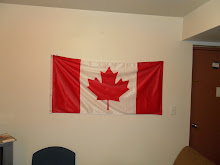Friday, January 1, 2010
Sources of my Quandries
Association of American Railroads, . "U.S. Freight Railroad Productivity." Sep. 2009: 1-2. Web. 29 Dec 2009. http://www.aar.org/~/media/AAR/BackgroundPapers/Railroad_Productivity_Sept2009.ashx.
Association of American Railroads, . "The Staggers Act: Balanced Regulation that Works." Jun. 2009: 1-3. Web. Dec 29 2009. http://www.aar.org/~/media/AAR/PositionPapers/Balanced%20Regulation%20Overview%20June%202009.ashx.
Canadian National Railway Company, . "Consolidated Statement of Income." Canadian National Railway Company. 30 Sep. 2009. Canadian National Railway Company, Web. 28 Dec 2009. http://www.cn.ca/documents/Investor-Financial-Quarterly-2009/Q3-2009-Financial-Statements-en.pdf.
Canadian Pacific Railway Limited, . "Canadian Pacific Third Quarter Report 2009." Canadian Pacific Railway Limited. 30 Sep. 2009. Canadian Pacific Railway Limited, Web. 28 Dec 2009. http://www8.cpr.ca/cms/NR/rdonlyres/elzeyyojjzhnjyoyeziafptmae4rclyogadgttk6khace47fnfrnlkyshbpug62drx5cqma7ts3hmipagph5qkpoyqf/Q3+09+ReleasewithMDAV3.pdf.
The Railway Association of Canada, . "Canadian Rail Operating Rules." RAC. 26 Feb. 2008. RAC, Web. 26 Dec. 2009. http://www.railcan.ca/documents/rules/1684/2008_03_19_CROR_TCO_093_en.pdf.
Hannaford, Steve. "Big Railroad Deal." Oligopoly Watch. 01 Oct. 2007. Steve Hannaford, Web. 28 Dec. 2009. http://www.oligopolywatch.com/2007/09/06.html.
Feel free to check out some of these links
Graphs Anyone?
 Let's start back in 1881, when the CPR was created. This graph shows how because it was a monopoly the demand curve for the CPR was extremely steep (more inelastic) because there was no options for cosumers to choose. However, costs were high in this time, and an unstable government was not subsidizing them as well as they could, in fact they were more likely to be regulating them because they were a monopoly. However, you can see that the price point is fairly high above the ATC which shows that CPR was more interested in profits (The box with orange shading is profits)then in consumer happiness seeing they were not producing at the fair-return point (Where ATC crosses the demand curve). Therefore we can see that CPR was not productively and allocatively efficient.
Let's start back in 1881, when the CPR was created. This graph shows how because it was a monopoly the demand curve for the CPR was extremely steep (more inelastic) because there was no options for cosumers to choose. However, costs were high in this time, and an unstable government was not subsidizing them as well as they could, in fact they were more likely to be regulating them because they were a monopoly. However, you can see that the price point is fairly high above the ATC which shows that CPR was more interested in profits (The box with orange shading is profits)then in consumer happiness seeing they were not producing at the fair-return point (Where ATC crosses the demand curve). Therefore we can see that CPR was not productively and allocatively efficient.
This graph represents the CNR. Notice that because this comany was put in place by the Canadian Government, creating competition for the CPR, we see that the demand curve is not as inelastic or less steep. Also the demand curve as moved left because now there is competition and subsitution is available to consumers. However, because there is only ONE other company as competition, the demand curve is still fairly steep and has not moved left all that much. Also, the price point has gone down, however, it is still a fair ways above the ATC and the fair-return point which shows that even with the CPR as competition CNR is still an allocatively and productively inefficient company. CNR, in this graph, has a larger profit (then the CPR, graph below) and the ATC is slightly closer to the demand curve which means that costs were slightly lower for CNR in this instance (The box with orange shading is profits).
 This graph is of the CPR AFTER CNR entered the market. Due to the entrance of CNR, CPR's demand curve moves left AND becomes more elastic. In this graph, I choose to draw CPR having slightly higher costs and therefore they have lower profits. (The box with orange shading is profits). Despite, CNR's presence in the market, CPR is still productively and allocatively inefficient because, the price point is much higher then ATC and it is also higher then the fair-return point. Needless to say, the oligopoly formed by these two companies doesn't really change the inefficiency problems created by the monopoly of CPR, it may decrease the problem slightly, but not by a whole lot. This is good way of showing that oligopolies are almost as inefficient as their monopolitic counterpart.
This graph is of the CPR AFTER CNR entered the market. Due to the entrance of CNR, CPR's demand curve moves left AND becomes more elastic. In this graph, I choose to draw CPR having slightly higher costs and therefore they have lower profits. (The box with orange shading is profits). Despite, CNR's presence in the market, CPR is still productively and allocatively inefficient because, the price point is much higher then ATC and it is also higher then the fair-return point. Needless to say, the oligopoly formed by these two companies doesn't really change the inefficiency problems created by the monopoly of CPR, it may decrease the problem slightly, but not by a whole lot. This is good way of showing that oligopolies are almost as inefficient as their monopolitic counterpart.
